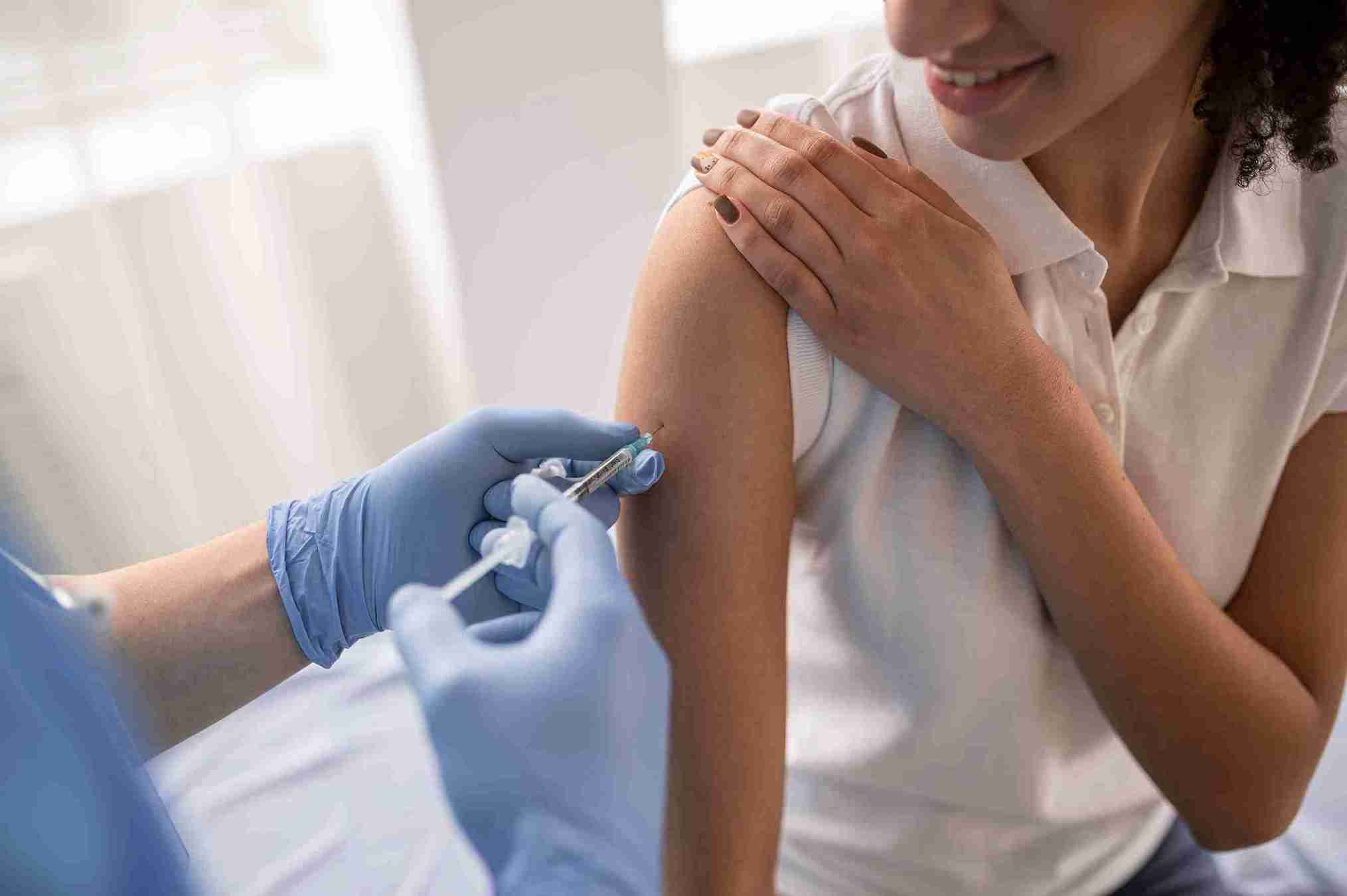
Sexually transmitted diseases don't always show symptoms and are not always fatal. Timely diagnosis and medical intervention can help successfully treat the infections with minimal impact. The Center for Disease Control and Prevention has different guidelines for screening and treating different STIs. Wondering when to get STI tested? Here is everything you know about such STI screening guidelines.

STIs or Sexually Transmitted Infections are infections that pass from one individual to another through sexual contact. According to studies and records, more than 30 different bacteria, parasites, and viruses can be transmitted through sexual contact. It can be through vaginal, anal, or oral sex.
Some STIs can be passed on to the baby from the mother during pregnancy, delivery, or breastfeeding. The developing baby has low immunity, which makes them more vulnerable to infections if the mother is carrying them.
Eight STIs are very common worldwide. Four of them — syphilis, gonorrhoea, chlamydia, and trichomoniasis — can usually be cured with proper treatment. The other four — hepatitis B, HIV, HPV, and herpes (HSV) — are viral and not curable, but their symptoms can be managed with medication. In some cases, curable STIs may return if neglected or not treated fully.
Yes, STIs have a significant impact on one's sexual and reproductive health. If left untreated, the infection can spread and lead to serious health issues as well.
● Syphilis, herpes, and gonorrhoea increase the risk of developing HPV, the primary cause of cervical cancer.
● When the STIs pass on from the mother to the fetus, it can result in stillbirth, neonatal death, low birthweight, congenital deformities, premature birth, or sepsis.
● Hepatitis B, if left untreated, can lead to cirrhosis or hepatocellular carcinoma, which can be fatal.
● Gonorrhoea and chlamydia can lead to pelvic inflammatory diseases or even infertility in women.
● If left untreated, the infection can spread and even lead to brain damage or death in some cases.
Not all STIs present obvious symptoms. STIs like chlamydia or gonorrhea rarely show any symptoms, and if left untreated, they can lead to long-term health issues, including infertility, organ damage, or cancer. If the infected woman gets pregnant, she can pass on the infection to the baby or cause congenital disabilities.
Regular screening for STIs in sexually active individuals, especially from a high-risk population, can help detect infection at the earliest. Early or timely treatment reduces the impact of the disease and helps prevent serious complications. It also prevents the spread of STIs from the infected individual to their sexual partners.

The CDC and NIH recommend the following guidelines for sexually active individuals. The STI testing guidelines vary for different infections.
All adults, including women, should be tested for HIV at least once in their lifetime. Pregnant women need to be screened for HIV during their first prenatal visit and require a retest if they belong to the high-risk category. If a woman has not been screened for HIV during pregnancy, a rapid test is recommended before delivery so that the baby can be tested and treated as early as possible.
Sexually active women under the age of 25 should be screened for both infections. For women over 25 years, screening is recommended if they belong to the high-risk population. Rectal testing is recommended based on sexual behaviours. All pregnant women must be screened for the infection. Pregnant women under 25 may be at higher risk and are advised to get tested again in the third trimester, especially if they have certain risk factors.
For those who have undergone treatment, a retest 3 months after the treatment is recommended. For persons with HIV, annual testing is recommended. More frequent testing is required in the case of risk behaviours.
Women may need Hepatitis B screening if they have had multiple partners recently, or if their partner has Hepatitis B or has used injectable drugs.
Pregnant women should get tested for Hepatitis B at every prenatal checkup, irrespective of the previous prenatal test result. If she belongs to the high-risk category, a retest during delivery time is necessary.
All pregnant women, and all adult women in general, should be tested for Hepatitis C unless it's known that infection is extremely rare in their community (less than 0.1%). The same applies to pregnant women as well. For those who are HIV positive, annual testing is recommended.
Men who have sex with men are at higher risk of syphilis and should get screened once a year. All pregnant women are also advised to get tested as part of routine care.
Regular screening is recommended for women from the high-risk category. Pregnant women should get checked at the first prenatal visit. If they are from a high-risk category or have multiple partners, a retest at 28 weeks is recommended.
A Pap smear test to check for cervical cancer is recommended for women over the age of 21. Women between 21 and 30 years of age should get checked every 3 years, and women over 30 years of age can get a Pap smear test or HPV screening once every 5 years.
Type-specific HSV serologic testing is recommended for women with multiple sex partners. HSV-2 serologic testing should be avoided for pregnant women, while type-specific serologic tests may be helpful for those in the high-risk category. Pregnant women at risk should also be counselled about the risk of contracting genital herpes during pregnancy.

Using protection like condoms can help prevent STIs to a great extent. Most of the time, STIs don't show any symptoms until it is too late. Here are some essential strategies to help prevent the spread of STIs –
● Educating and counselling individuals at risk about changes in sexual behaviour and ways to avoid STIs
● Accurate risk assessment of the susceptible population
● Vaccinating against vaccine-preventable STIs
● Identification of both symptomatic and asymptomatic individuals with STIs
● Effective diagnosis, counselling, and treatment of infected individuals, along with follow-up
● Evaluating, treating, and counselling partners of infected individuals
According to CDC guidelines and those of similar bodies, the treatments for STIs should focus on –
● Treating the infection based on microbiologic eradication
● Alleviation of signs and symptoms of infection
● Preventing sequelae
● Preventing transmission.
No, the screening guidelines vary on the following basis –
● The level of sexual activity of the individual
● If they belong to the high-risk population
● Prevalence of certain STIs in their community
Individuals sexually active with multiple partners require frequent screening for various STIs.

Regular screening for STIs in sexually active women, especially those with more than one partner or in the high-risk category, can help in early detection. As only 4 STIs have a cure, timely detection helps in treating the others without letting them affect one's quality of life. Regular screening for STIs is compulsory for pregnant women during their first prenatal visit, as infections can transfer to the baby and result in serious consequences.

All sexually active individuals must get tested for STIs. Individuals with multiple sex partners, from high-risk categories, or with a history of STIs must get tested more frequently. Pregnant women should get tested during their first prenatal checkup to start treatment at the earliest, if necessary.

Yes, many STIs are asymptomatic and may not show symptoms until the infection has advanced. Regular screening helps in early detection despite the lack of any symptoms.

Most STIs have treatments. If someone tests positive, contact a doctor immediately and discuss treatment options. They need to inform their sexual partners and recommend that they get checked as well. If an individual is pregnant, it is essential to monitor the infection and the baby's development closely.

According to WHO, the eight most common STIs screened for are HIV, HPV, HSV, Hepatitis B, chlamydia, gonorrhoea, syphilis, and trichomoniasis. Blood tests, urine tests, or swab samples can help screen for these STIs. While some are curable, others can be effectively managed with the proper medication or treatment.